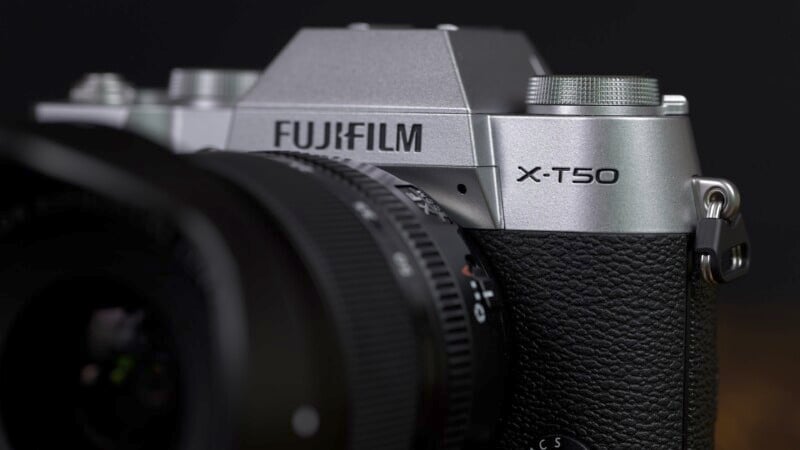Fujifilm is consistently updating its line of mirrorless cameras to make use of the latest film simulation modes and sensor technology. It is no surprise, then, that it has released a 40-megapixel version of its insanely popular X-T double-digit line to bring high resolution to an affordable platform: the X-T50.
But is this an X-T50 or is it an X-T5 lite? This may not have the same body design as the X-T5 but it does have some powerful additions such as the aforementioned 40-megapixel sensor and excellent autofocus performance the X-T5 is known for. Fujifilm has also added a 7-stop rated IBIS unit to the X-T50 which enhances its usefulness in a big way.

A Gorgeous New Body Design
I have to say that I instantly fell in love with the new body design. The X-T50 features a rounded top plate with angled contours that make it distinct from the rest of the Fujifilm family. The new grip is bigger and far more comfortable than the simple vertical ledge that the predecessors have. Both the front and rear control dials are easier to manipulate and the push button functionality worked well. I like the amount of customizable buttons and there is still an AF joystick on the back.
The top plate has the usual analog-styled shutter dial but the other side of the camera has a curious dial dedicated to film simulation modes. The more popular modes such as Provia, Velvia, Astia, Nostalgic Neg, and Acros are hard-coded into the dial and three custom settings can be set up for your favorite options. Fujifilm even has a clever on-screen graphic interface to show you the film canister and description of the chosen simulation mode.
The usual single UHS-II SD card slot and familiar Fujifilm NPW-126S battery are still present along with a 3.5mm mic jack and a headphone adapter via the USB port. The body itself is incredibly lightweight at only 15.4 ounces (438 grams) and as usual, is not weather sealed. A handy pop-up flash is still present, too.
Not Quite an X-T5
Although the image quality will be identical to an X-T5, the shooting speed will not. The X-T50 can achieve a respectable 8 frames-per-second shooting rate with the mechanical shutter and up to 20 with the electronic shutter if you are okay with a bit of a crop. We aren’t going to test the buffer rate until we have a full-production copy but it should be roughly in line with what we expect on bodies like the X-T30 II. Photographers looking for more casual action and sports shooting should find the X-T50 acceptable but serious shooters will want to look elsewhere.
The displays also lack a little power with a decent 1.84 million-dot LCD back panel and a disappointing 2.36 million-dot EVF. By this point, we should be seeing entry-level cameras with 3.69 million-dot EVF displays at least, although this is as much a criticism of all the manufacturers as it is of Fujifilm. Unlike the X-T5, the X-T50 display only tilts vertically for waist-level or above-a-crowd shooting.
Who Will the X-T50 Work For?
The X-T50 is clearly aimed at the photographic community as the 40-megapixel sensor delivers excellent image quality but somewhat hampers video performance. It’s possible to shoot 4K 30p video the full width of the sensor but the pixel binning reduces image quality. Otherwise, you can shoot 4K 60p or even 6.2K 30p but with a heavy crop. It’s important to note that the read-out speed of the 40-megapixel sensor isn’t ideal either and rolling shutter will rear its head.
It’s also clear that the X-T50, while still aimed at beginner photographers, has much better overall photo capabilities thanks to the IBIS unit and enhanced autofocus performance. It would make for an excellent backup body for an X-T5 user and has a bit more room to grow as a beginner learns the craft. It would also be an ideal travel camera for the advanced photographer looking to keep things light and compact.
When it hits the market, I feel the X-T50 will be very popular indeed and I look forward to spending more time with a full production unit in the coming weeks.
Source link